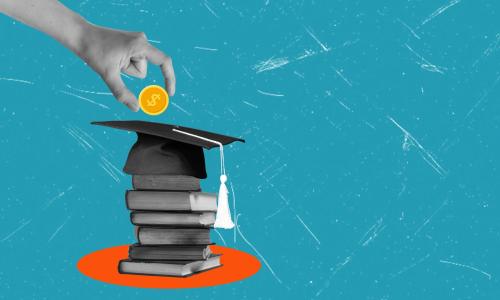With graduation season upon us, roughly four million students will complete their degrees and earn a diploma. For these students, a degree often means better career opportunities and higher wages. But increasingly a college degree comes with high student loan debt and years—even decades—of payments on that debt.
In a recent policy brief, we investigate the causes and consequences of rising student loan debt. We find that student loan balances reported by households grew markedly over the past two decades; the overall share of households with student debt more than doubled from 1989 to 2010, with the share rising slowly from 9 percent in 1989 to 12 percent in 2001 before jumping to 19 percent by 2010. Not surprisingly, this trend was driven by increased prevalence of student loans among young people; in 2010, more than 40 percent of households under the age of 35 carried student loans.
The typical student loan debt outstanding, among households with student loans, has also grown significantly. Between 1989 and 2001, nominal median outstanding debt rose from about $5,200 to about $10,000, before rising to about $13,400 in 2010. After adjusting for inflation, median student loan balance among households with student loans rose by about 52 percent over this period.
Increased student loan balances impact the economic choices of students and graduates.
For example, student loan burden can affect occupational choice—one study found that student debt pushes some students toward jobs with higher expected wages, such as those in engineering and economics. Other studies have found that students with debt report dropping out or transferring to a lower-cost school, or that debt can have negative impacts on students’ mental health. Later in life, debt is correlated with lower credit scores, can discourage the pursuit of a graduate education, and can even impact the timing and quality of a marriage.
Concerns over rising student debt levels have given rise to proposals designed to mitigate the level and repayment burden of education debt. For example, the “Loans for Opportunity” program proposed by economist Susan Dynarski would shift student loan repayments to employer payroll systems, and vary repayment rates from 3 percent to 10 percent based on income. The Obama Administration has proposed to address the high student loan burden by regulating schools with subpar outcomes for students through “gainful employment” regulations aimed at penalizing vocational schools that graduate students into poor employment outcomes. In addition, a host of proposals have aimed to lower the net cost of tuition through tax credits or expansions in the Pell Grant program.
The rise in student debt is not all bad news. Some of the rise is due to increased schooling, including higher prevalence of graduate degrees, which will make the American workforce more productive in the future. But while the costs of having higher student loan debt should be weighed against the well-documented economic returns to education, it is clear that the rising burden of student loans can have lasting economic impacts on student borrowers.
The Brookings Institution is committed to quality, independence, and impact.
We are supported by a diverse array of funders. In line with our values and policies, each Brookings publication represents the sole views of its author(s).



Commentary
Student Loans Rising
May 14, 2014